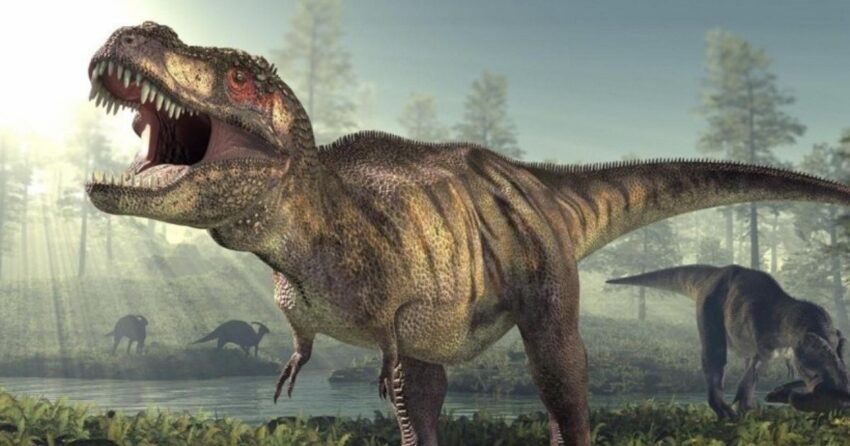The Tyrannosaurus rex (T. rex) is one of the most iconic dinosaurs of all time, often portrayed as the apex predator of the Late Cretaceous period. Standing at 40 feet long, weighing up to 9 tons, and equipped with a bone-crushing bite force of nearly 12,800 pounds, the T. rex ruled the ecosystems of North America approximately 68 to 66 million years ago. But despite its fearsome reputation, even this mighty predator may not have been entirely free from the threat of predation or conflict.
Could Anything Have Preyed on T. rex?
At the peak of its dominance, the adult T. rex faced few, if any, direct threats from other predators. However, there are scenarios where T. rex individuals, particularly juveniles or weaker adults, may have been vulnerable to attacks or scavengers. Let’s explore the possibilities.
Rival T. rex Individuals
One of the most plausible “predators” of a T. rex may have been another T. rex. Fossil evidence suggests that territorial disputes or battles for dominance between these massive theropods were not uncommon. Paleontologists have discovered bite marks and injuries on T. rex skeletons that match the shape and size of T. rex teeth, indicating intraspecific aggression. In some cases, these conflicts may have ended in death, leaving the loser as a potential meal for its rival.
Juvenile T. rex Vulnerability
While adult T. rexes were formidable, their juveniles were not invincible. Juveniles were smaller, faster, and likely more reliant on speed and agility than sheer power. This stage of life may have made them susceptible to predation by other large theropods or opportunistic predators that shared their environment. Dinosaurs like Dakotaraptor, a large dromaeosaurid, may have posed a threat to young T. rex individuals.
Scavengers and Opportunists
In a world teeming with competition, even the deadliest predators could fall victim to scavengers. When an adult T. rex was weakened by illness, injury, or old age, it might have been targeted by smaller carnivores or scavengers such as troodontids or smaller tyrannosaurids. Though these creatures would not actively hunt a healthy T. rex, they could take advantage of any signs of vulnerability.
Environmental Challenges
While not a predator in the traditional sense, nature itself could have been one of T. rex’s greatest threats. Natural disasters, such as floods, volcanic activity, or food shortages, may have indirectly led to the deaths of T. rexes. Decomposing carcasses would then attract scavengers, which might include smaller predatory dinosaurs.
Apex, but Not Invincible
The T. rex undoubtedly sat at the top of its food chain, but that does not mean it was entirely without risks. While evidence of direct predation on T. rex is scarce, paleontologists continue to uncover clues about the challenges this dinosaur faced in its environment. From rival T. rexes to opportunistic scavengers, the world of the Late Cretaceous was a place where even the mightiest had to fight for survival.
Conclusion
The question of whether the T. rex had predators is both fascinating and complex. While adults were likely immune to most predation due to their size and strength, younger individuals and weakened adults might have faced challenges from rivals or smaller predators. This dynamic ecosystem highlights the harsh realities of life in the prehistoric world, even for the so-called “king of the dinosaurs.”For more information click dinorepeat.com

